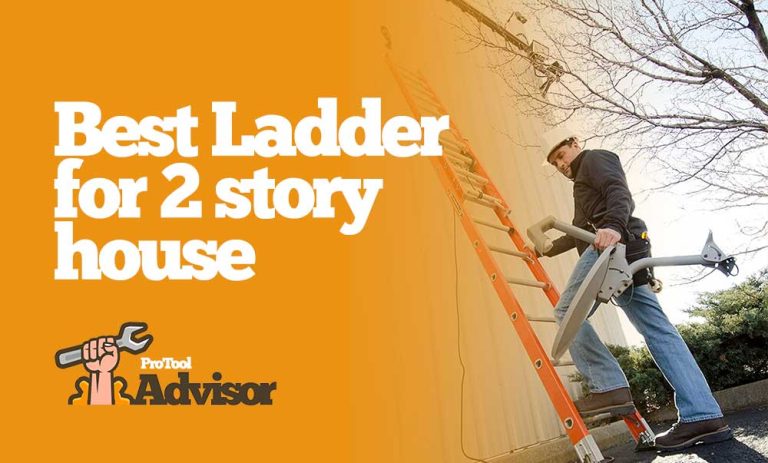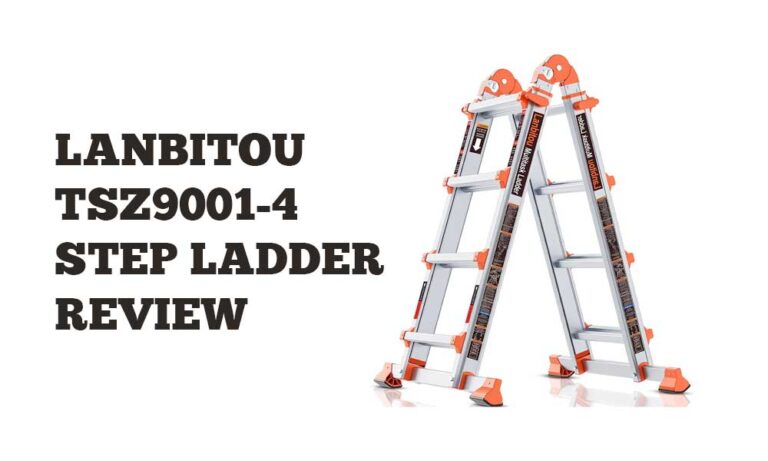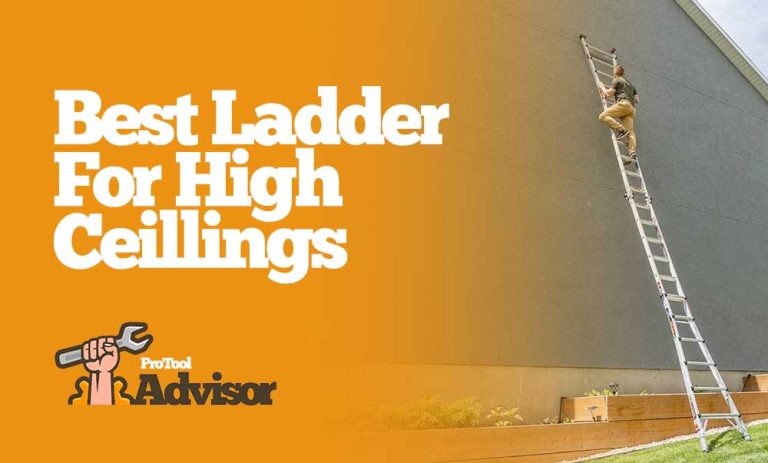20 Different Types Of Ladders & Uses, Buying Guide, Safety Tips
 Ladders can be a useful tool for anyone who wants to reach a high place beyond his height. They vary in different lengths and shapes that are specially designed for specific purposes. Knowing their types is important to choose the right ladder for the job.
Ladders can be a useful tool for anyone who wants to reach a high place beyond his height. They vary in different lengths and shapes that are specially designed for specific purposes. Knowing their types is important to choose the right ladder for the job.
No matter whether you’re looking for a ladder for doing household chores like reaching a high shelf or finding a ladder for industrial applications, there is a ladder out there that will suit your needs. With this in mind, this guide will cover some common types of ladders with their intended uses and other additional information about ladders.
What is a lader?
A ladder is a common tool mostly used to climb and get into high locations. Two perpendicular side rails or rafters are connected jointly by rungs or stairs to form the structure, allowing a person to climb up or down.
Ladders are available in different sizes and shapes ranging from small step ladders used in DIY projects to lengthy extension ladders employed in construction projects.
What are ladders made of?
The common materials that are used for making ladders are wood, fiberglass, aluminum, and steel. Wooden ladders are mostly suitable for DIY projects like painting a high building or cleaning gutters. On the other hand, aluminum and fiberglass ladders are robust and sturdy enough for high-end industrial applications.
Wooden ladders are typically constructed with strong and resilient timber like ash or oak. Aluminum ladders have portable yet robust construction of aluminum alloy while fiberglass comes with composite materials such as reinforced plastic resin.
Besides these, there are many other ladders with several constructions such as steel, plastic, carbon fiber, etc. Each material has different properties and uses depending on the project.
The choice of construction materials may vary depending on the load capacity, sturdiness, intended applications, and mobility factor.
Parts of a ladder
The ladder consists of several parts including:
Side rails: The ladder’s structure is made up of two lengthy, perpendicular upright beams. They offer stability and support.
Rungs or steps: The horizontal bars that link the two side rails, serving as ascending footholds.
Feet: The portion of the ladder’s foundation that touches the floor. They are typically constructed from rubber or other slip-resistant materials to keep the ladder from sliding.
Spreaders or locking mechanisms: Spreaders are what maintain the two side rails open while preventing the ladder from collapsing. A locking mechanism may be available on some ladders, which can be used to secure the ladder.
Top cap or plate: The uppermost section of the ladder that provides a surface to lean upon when the ladder is tilting against a wall or something else. Additionally, it helps in evenly dispersing the user’s weight over the ladder’s surface.
Pail shelf: The platform towards the top of the ladder serves as a space to store equipment, paint cans, and other supplies. There isn’t a pail shelf on every ladder.
Different types of ladders
There are different types of ladders available in the market each with different structures and purposes. Knowing the types of ladders can help you to choose the right one for your projects. Following are some of the most common types-
1. Step ladder
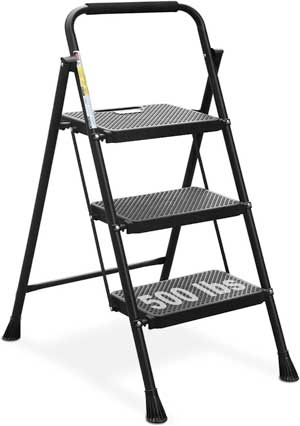
A step ladder is a self-supporting ladder consisting of flat stairs that you can open easily and adjust without any assistance. It comes in handy for small DIY applications like getting to a high shelf or changing light bulbs.
2. Twin step ladder
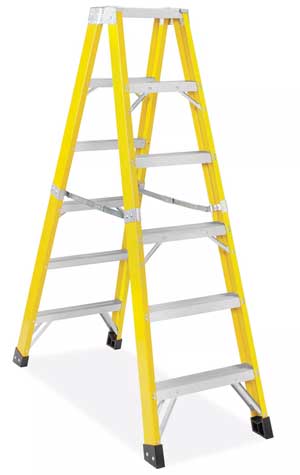
It has a similar structure to a step ladder consisting of steps on both sides. As a result, two people can use this ladder at a time. It is mostly used for industrial purposes.
3. Step stool
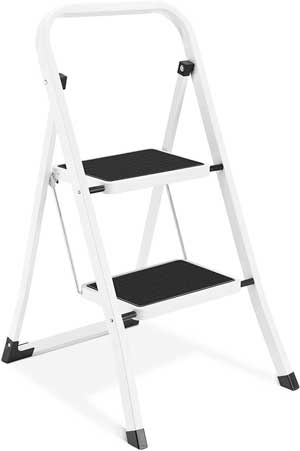
A step stool is a tiny, portable ladder consisting of one or two steps. Due to its lightweight design, it is used in household tasks and other low-end projects.
4. Straight ladder
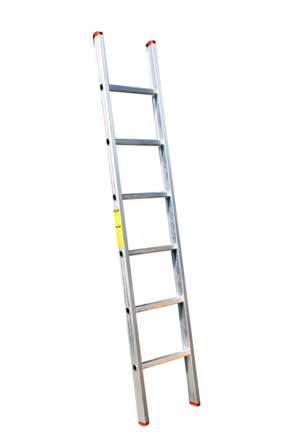
A straight ladder is non-shelf-supportive that requires leaning against a wall or any horizontal bar. You can use it for many outdoor applications like cleaning gutters or painting a two-story house.
5. Attic ladder
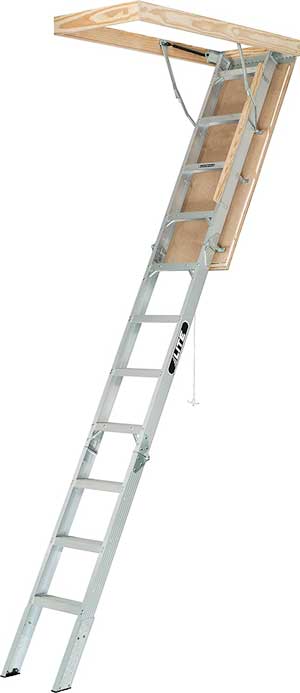
It is a foldable ladder that is positioned in a ceiling aperture to provide reachability to a crawl space or attic. It has wood or aluminum construction and is easy to install and set up.
6. Platform ladder
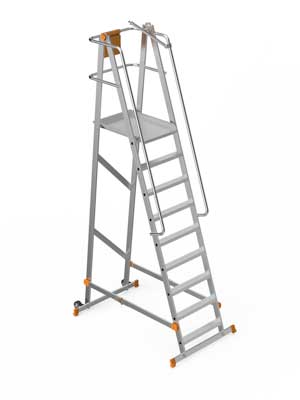
It is another shelf-supporting ladder that comes with a sizable platform at the top for sufficient support and stability. This ladder is widely applied for commercial and industrial purposes.
7. Extension ladder
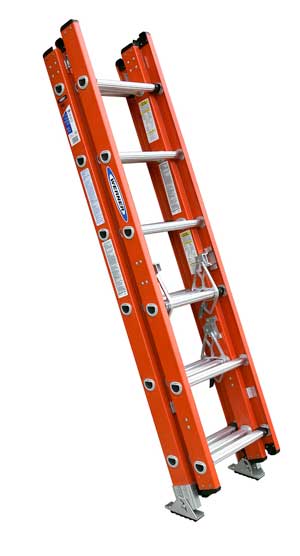
The extension ladder has no self-supporting structure but it can be easily extended at various altitudes by simply gliding the sections up or down. It is most commonly used for cleaning gutters, and windows and reaching a high building.
8. Folding ladder
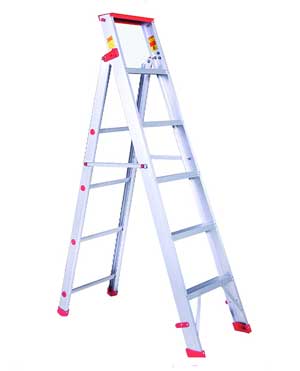
As its name suggests, a folding ladder has a foldable design to easily store and transport it from one place to another. Most household tasks such as changing bulbs or reaching a high shelf can be done using a folding ladder.
9. Multi-purpose ladder
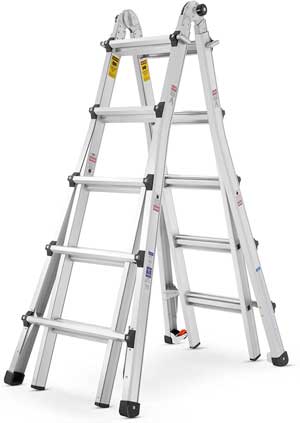
As the name implies, a multi-purpose ladder can be employed in various configurations including a step ladder, extension ladder, or scaffolding. It can be an ideal choice for commercial or industrial purposes.
10. Trestle ladder
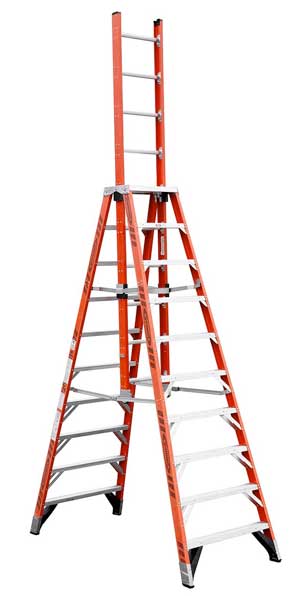
A ladder with a vertical bar at the top that can be used to build a scaffold by spanning two trestles. It is often employed in painting or building.
11. Flexible ladder
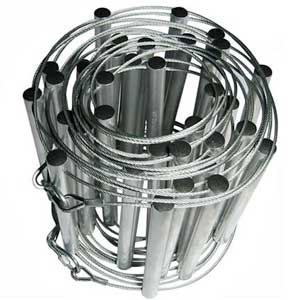
A flexible ladder has a collapsible design to be bent or curved easily so that it can fit various shapes and angles. In many industrial settings where it is difficult to reach, a flexible ladder can be of great benefit.
12. Telescoping ladder
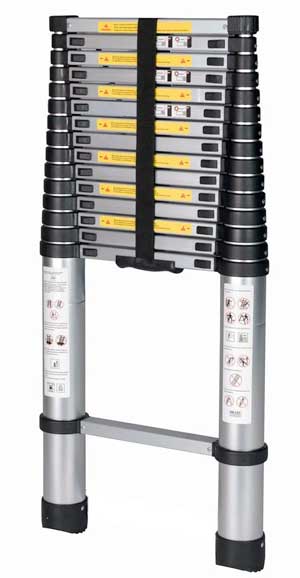
Like extension ladders, a telescoping ladder is easy to extend with a collapsible design that also has more tight storage. You can use this ladder for both indoor and outdoor projects.
13. Podium ladder
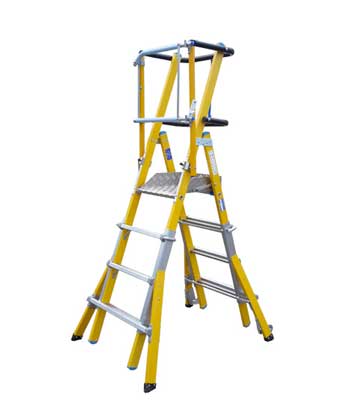
Similar to a platform ladder, a podium ladder has a self-supporting structure and a large platform usually with a lower height than platform ladders. This is ideal for many industrial and commercial applications where reaching a high altitude is difficult.
14. Articulated ladder
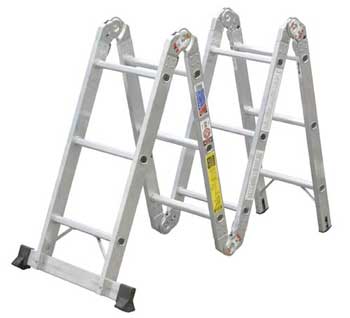
An articulated ladder comes with a foldable design and a locking mechanism at different places so that you can use this ladder as a step ladder, straight ladder, or scaffolding. It is widely used for many construction and painting projects.
15. Net ladder
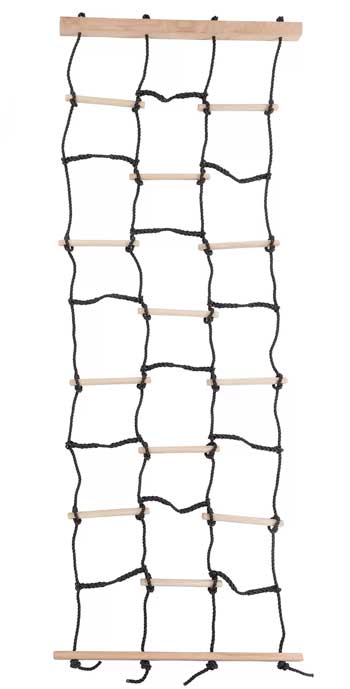
A ladder formed of a net of rope or another material with stairs woven into it. It is often utilized in outdoor settings where an ordinary ladder can be challenging to use.
16. Pool ladder
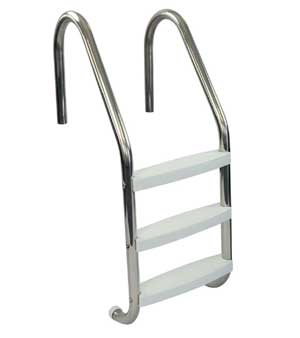
A pool ladder is mostly developed to use in a swimming pool. It is made up of non-corrosive materials and slip-resistant tracks for maintaining user safety.
17. A-frame ladder
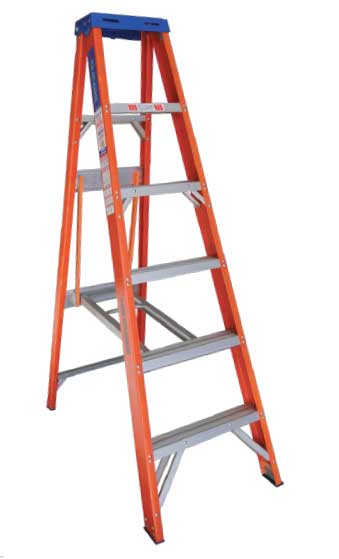
It is a self-supporting ladder with two sides connected at the top by a vertical bar that gives it an A-shape. In comparison with a traditional straight ladder, it is sturdy on uneven terrain and mostly used for both indoor and outdoor purposes.
18. 5-Step portable ladder
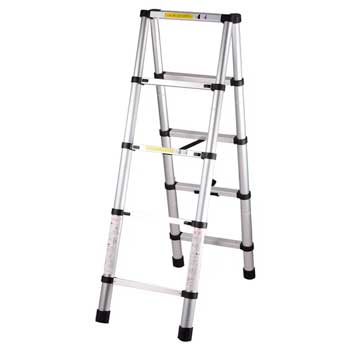
It is a tiny, easily movable ladder consisting of 5 steps with a collapsible design for easy storage and maneuverability. This small, lightweight ladder is ideal for performing household chores like changing bulbs or reaching a high place.
19. Portable warehouse ladder
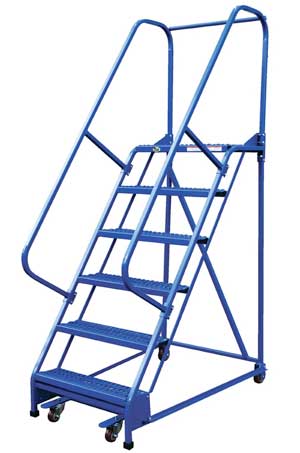
This ladder is particularly organized to employ in a warehouse, consisting of a wide platform at the top and wheels for quick mobility. It is mostly applied for high-maintenance tasks and other stock management projects.
20. Tripod ladder
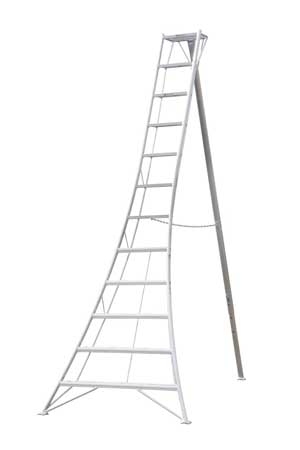
A tripod ladder has three legs to provide greater stability on uneven surfaces including slopes or staircases. It is widely employed when working in gardens or orchards where a firm work surface is necessary on unsteady ground.
Considerations for Buying a Ladder
When it comes to buying a ladder, you have to consider some factors for making a worthwhile investment. These are-
Usage
You should first decide for what purpose you’re going to use a ladder whether for indoor tasks or outdoor applications. Determine if you’re going to use it for painting, cleaning gutters and windows, or reaching high shelves.
There are several ladders available in the market specially designed for different purposes. The intended usage of the ladder will help you to find out the best ladder that suits your needs.
Length
The length of the ladder is also an important consideration because it tells you how long the ladder can reach. Different ladders have varying lengths according to the particular project. Therefore, you need to select a ladder that has a perfect length so that you can perform your tasks perfectly.
You need to choose a long ladder when reaching a high ceiling or roof. However, when it comes to performing household chores, you may not need a long ladder.
Weight
Make sure to consider the weight of the ladder before making a purchase. Because the ladder’s weight tells you how much load it can handle. However, you don’t need to buy a ladder that is too heavy or too light.
Too-heavy ladders may be challenging to move around while too-light ladders can’t handle your load and are more susceptible to break. Look for a ladder with a significant weight ratio that is durable enough to handle the average load and lightweight enough for easy mobility.
Versatility
Looking for a versatile ladder can be helpful if you want to use it for a variety of purposes such as painting houses, cleaning gutters, and reaching high shelves. We recommend choosing a ladder with an adjustable height mechanism that can be used at different altitudes.
Storage
Finally, you should also keep the storage needs of the ladder in mind. It usually takes a lot of space to store a ladder, so you should select a ladder that requires a small space for storage while not in use. We suggest choosing a ladder with a foldable or collapsible design for quick storage in a closet or garage.
Ladder use and safety tips
Ladders can be a useful tool for reaching high places but using them improperly can cause serious injury. Thus, there are some safety tips to be followed while using a ladder:
Examine the ladder: Check for any damage like loosened screws or cracks in the ladder before using it. Avoid using any damaged ladder because it can be detrimental.
Set up the ladder appropriately: It is important to set up the ladder in a smooth and stable place to prevent any injury. Never set up the ladder in any uneven or slippery area because it may end up hurting you. For additional support and stability, you can use stabilizers or leg levelers with the ladder.
Always maintain three points of contact: When ascending or descending the ladder, make sure to maintain 3 points of contact every time. It means keeping two feet and one arm or two arms and one foot on the ladder always. This helps provide much stability and support and ensures the safety of the user.
Always face the ladder: When going up or down make sure to face the ladder and stay away from leaning too far to one side or the other.
Avoid crossing weight limits: Knowing the weight limit of the ladder is important to prevent accidents. Do not carry heavy tools or objects when climbing up the ladder and avoid using the top stair of a step ladder.
Choose the right ladder for the job: Choosing the right ladder for particular tasks can not only give you high efficiency but also keep you safe. For instance, a step ladder is designed for indoor applications while an extension ladder is good to use for outdoor projects.
Wear proper safety gear: To avoid accidents, you should take proper safety measures including a safety harness or fall protection mechanism.
Conclusion
In the end, understanding the different types of ladders and their intended use can help you choose the right ladder for the job. This guide includes some common types of ladders without their functions. Besides, the ladder use and safety tips here will help to work efficiently and safely.
Finally, make sure to follow the safety tips before using a ladder since if used improperly it can be detrimental. Always wear safety equipment, and a safety harness, and keep a fall protection system in place.


